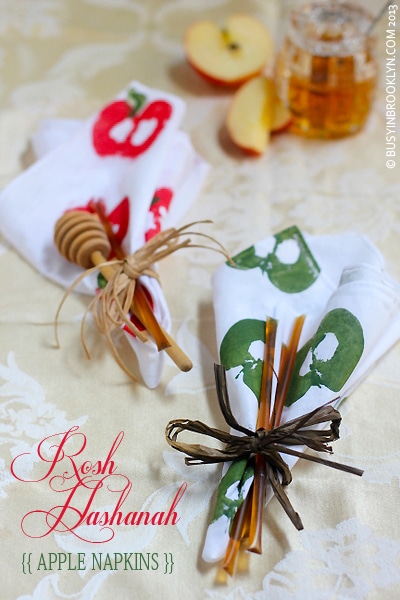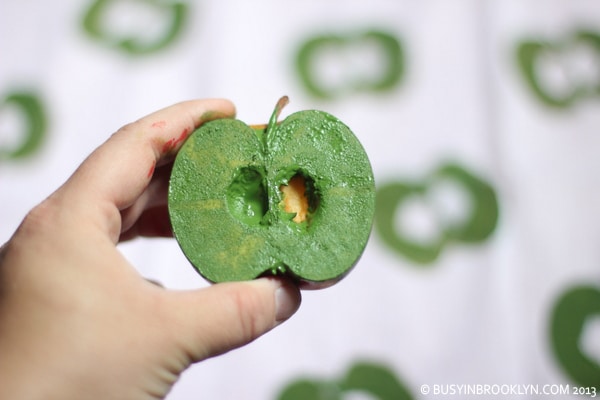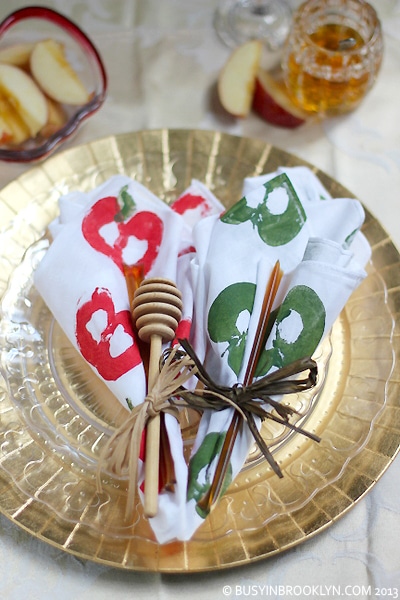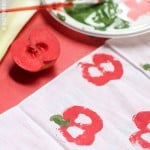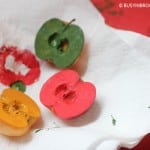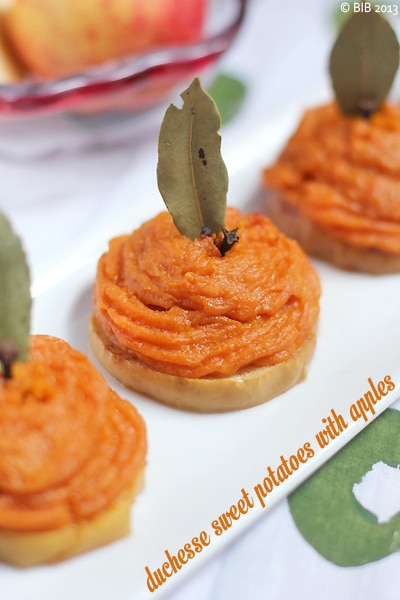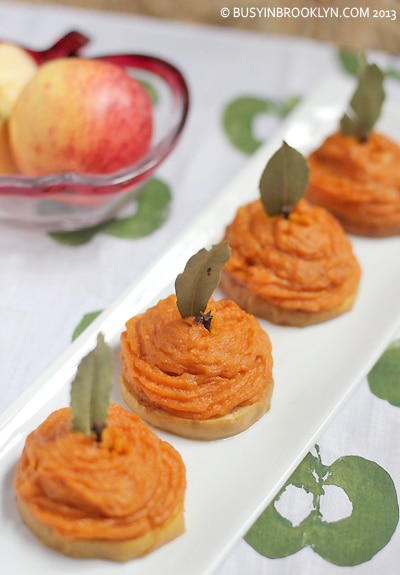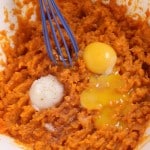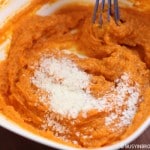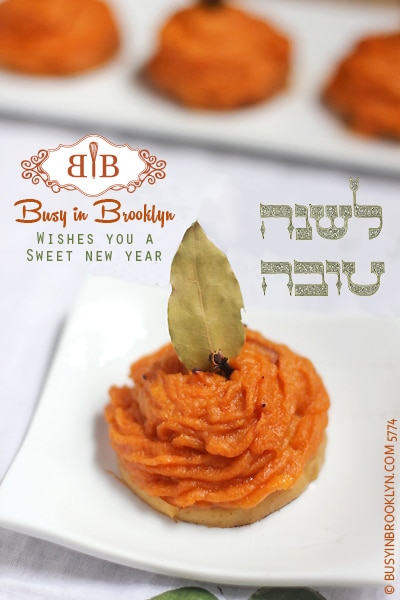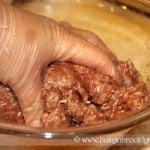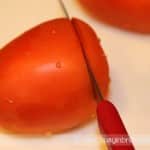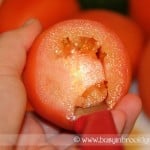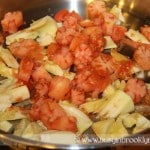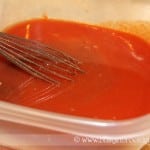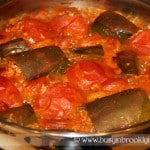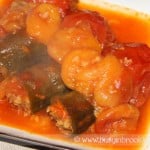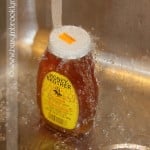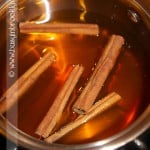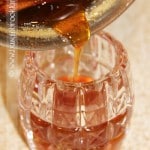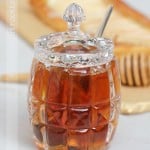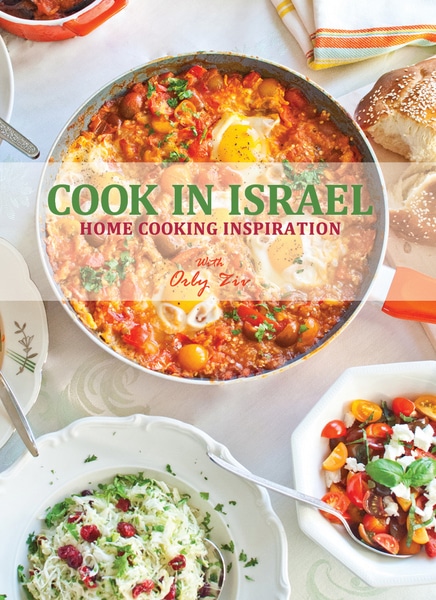
Orly Ziv, a nutritionist and cooking instructor from Tel Aviv Israel, is a cook after my own heart. In her debut cookbook, Cook In Israel, Orly showcases recipes that draw on her Greek Jewish Heritage, with flavors of the Middle East and Mediterranean. Her entire first chapter is dedicated solely to eggplant and tomatoes, ingredients which are central to my kitchen. Page after page, Orly’s simple, healthy and flavorful recipes are ones you would find on my dining table any day of the week.
Cook In Israel bears the subtitle “Home Cooking Inspiration” and that is precisely what Orly’s book is all about. In a warm family-oriented way that is customary for Israelis, Ms. Ziv welcomes you into her kitchen with open arms. Her book is clear, simple and straight-forward, with many step by step photos to help guide you along the cooking process. Orly shares family favorites, holiday dishes and an expansive array of vegetarian recipes that are mainstays in Middle Eastern culture.
What is most impressive to me is that Orly self-published this beautiful collection of recipes with masterful results. The typography, layout and picture-perfect photography can only be matched by her clear and concise style of recipe writing – a welcome change from most cookbooks (which include too much commentary).
As someone who relishes Middle Eastern cuisine, this book lacks traditional Israeli fare like “al ha-esh” bbq , shishkebab and other chicken & meat recipes. It is somewhat confusing that Orly only makes slight mention of the fact that her book is almost entirely vegetarian, with only two meat recipes, which in my opinion, are better left out altogether. As someone who is not ready to give up her carnivorous ways, this cookbook still offers countless recipes that are filling and flavorful, such as breads, fish, grains and legumes.
Vegetarian or not, Cook In Israel is a keeper after all.
GIVEAWAY DETAILS:
Busy In Brooklyn is thrilled to be able to give away a copy of Cook in Israel to one of my readers!
To enter the giveaway, vote for my grilled portobello burger with sundried tomato aioli in Swap it or Top it Mushroom Contest from The Mushroom Channel. You can vote once per day until August 31, 2013. Each vote will include one entry into the giveaway. Just leave a comment below letting me know when you have voted.
Winner will be chosen at random on Sunday, September 1st, 2013.
SAMPLE RECIPES:
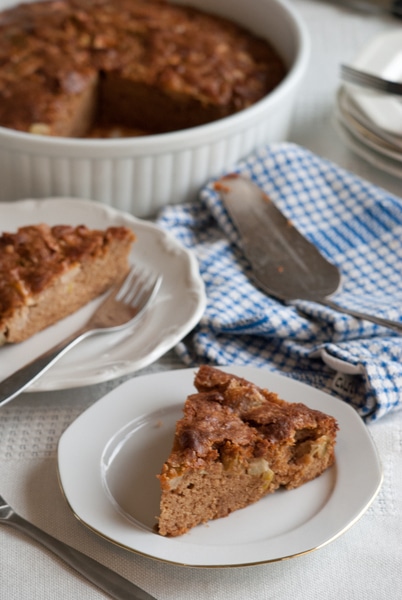
Apple Cake
Reprinted with permission from Cook In Israel by Orly Ziv, Home Cooking Inspiration
Ingredients:
2 green apples, unpeeled and diced
3 eggs
1½ cup brown sugar
¼ cup sweet red wine
½ cup vegetable oil
1 tsp. cinnamon
Pinch of salt
1½ cups whole wheat flour
1 tsp. baking powder
Handful of raisins or walnuts (optional)
Instructions:
1. Preheat the oven to 170°C/340°F.
2. Mix together all the ingredients in a large bowl by hand or in a mixer.
3. Pour the batter into a large, greased cake pan and bake for 45 to 50 minutes, until a toothpick inserted in the center comes out clean.
4. Serve warm with vanilla ice cream.
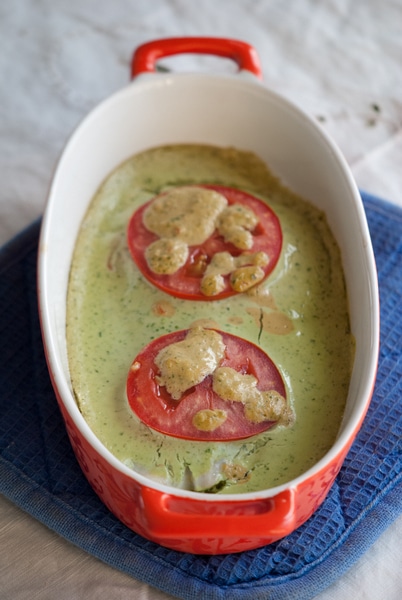
Fish with Green Tahini Sauce
Reprinted with permission from Cook In Israel by Orly Ziv, Home Cooking Inspiration
olive oil
2 tomatoes, sliced
4 tilapia filets (or any white fish)
½ cup boiled or canned chickpeas (optional)
1/2 cup tahini
½ cup finely chopped parsley
½ cup finely chopped cilantro
1-2 cloves garlic, chopped
Juice of 1 lemon, plus more to taste
1 cup water
1/2 tsp salt
Instructions:
1. Preheat the oven to 190°C/375°F.
2. Pour olive oil in a thin, even layer to coat the bottom of a baking dish.
3. Arrange slices of tomato along the bottom of the baking dish and top with the fish filets. Spread the chickpeas on top, if using.
4. Using a hand blender or food processor, mix the tahini, parsley, cilantro, garlic, lemon juice, water and salt until smooth and green diluted sauce.
5. Pour the tahini sauce over the fish and bake for about 20 minutes, until the sauce thickens.
6. Remove from the heat and serve.
VARIATION: To make fish with red tahini sauce, mix together 1 chopped tomato with the tahini, parsley, garlic, lemon juice, and salt as directed above (omit the cilantro). Leave out
the tomato slices and chickpeas from the recipe above, pour the red tahini sauce over the fish, and continue as directed.
Busy In Brooklyn Middle-Eastern Inspired Recipes:
roasted eggplant parmesan with feta
roasted eggplants with Israeli salad
summer tomato feta salad
malawach cheese pastries with dipping sauce
banana dates milk & honey smoothie
grilled chickpea burgers
Post a Comment
